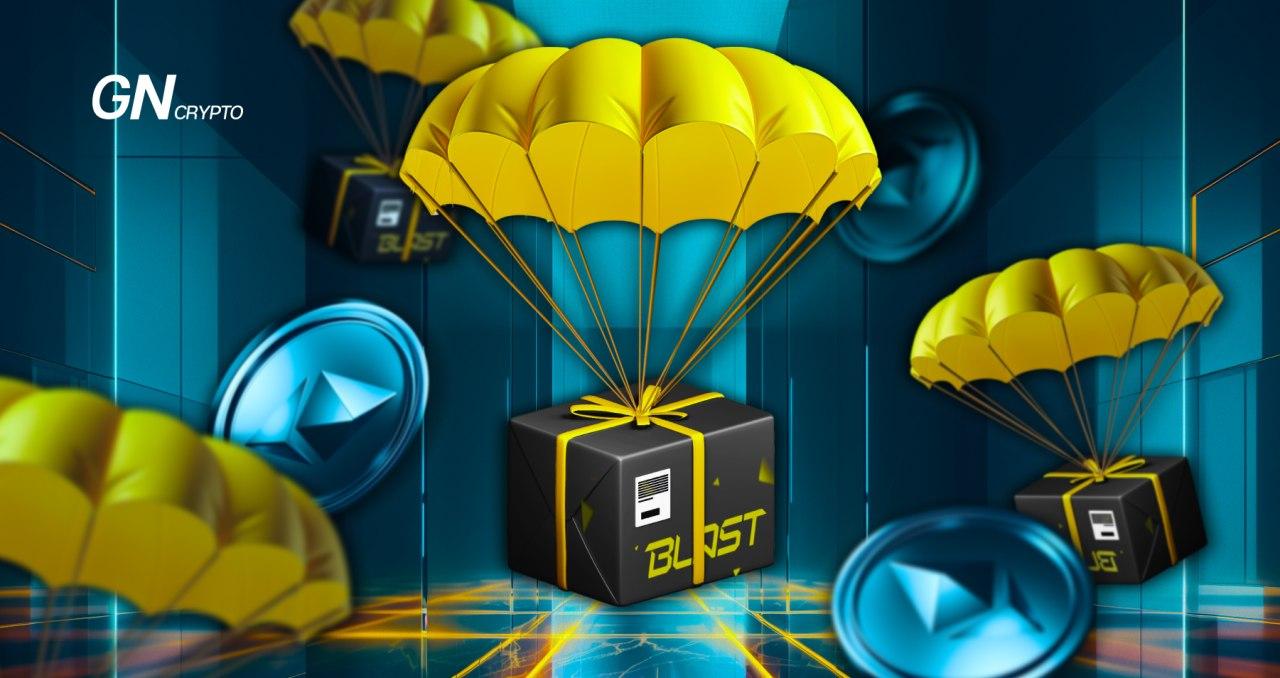Blast Mainnet: New Airdrop Activities

Blast, an Ethereum Layer 2 solution, officially launched its mainnet on February 29
On this page
According to initial plans, the BLAST token is expected to launch in May 2024, yet futures trading for the coin has already commenced on exchanges. The project intends to reward early users with a retroactive airdrop, targeting both ETH stakers before the mainnet transition and active participants within the network.
Let’s explore the Blast ecosystem and activities that could qualify you for the rewards.
Blast Statistics
Before the mainnet launch, Blast boasted a Total Value Locked (TVL) of over $2 billion. In our previous article, we discussed how locking ETH in Blast protocols would accumulate points for a retroactive airdrop.
Following the mainnet launch, i.e., the official launch of the new Ethereum Layer 2 network, users withdrew 90% of the funds, causing the TVL of the Blast pre-launch Farm program to drop to $140 million.
Blast Pre-Launch Farm TVL. Source: defillama.com
Meanwhile, Blast users began actively transferring funds to the new Layer 2. As of writing, the volume of locked liquidity in the network exceeds $440 million, and this figure is increasing daily. This indicates significant interest in the network, with the potential retro drop acting as a major catalyst.
In one of their tweets, the Blast team announced that 50% of the retroactive drop would be awarded to blockchain users (anyone accumulating points through activity), and the other 50% to various DeFi protocols. Thus, being active in this Layer 2 could be a good idea.
Blast TVL. Source: defillama.com
Blast Ecosystem. Airdrop Activities
According to DeFiLlama, the Blast ecosystem now includes about 40 projects, including decentralized exchanges, cross-chain bridges, DeFi protocols, lending platforms, etc.
The Blast Ecosystem. Source: defillama.com
The primary activity is transferring funds into the network, which can be facilitated by several applications:
The cost of such a transaction usually ranges from $5-$7, so it's advisable to make the entire deposit at once to avoid multiple uses of cross-chain bridges and unnecessary fees.
A key criterion for any airdrop is the total trading volume in the network. This can be boosted on the following DEXs:
These exchanges also allow users to add assets to liquidity pools to earn passive income through farming and project rewards. The derivative platform SynFutures also announced its token for traders, making activity in this network potentially doubly rewarding.
Lending protocols where users can deposit funds and borrow coins include:
Lending offers a way to hold cryptocurrency while enjoying the benefits of DeFi protocols, but it's important to be aware of the risks of liquidation and potential flaws in the applications themselves.
Overall, the network offers numerous activities, and users can interact with various types of smart contracts, such as:
- token deployment;
- starting their own liquidity pool;
- creating, buying, or selling NFTs;
- approving smart contracts, and more.
The variety of transactions can also be an important criterion for an airdrop.
Traders who invested ETH in Blast during the pre-launch stage can transfer funds to Layer 2 via the official bridge.
Advantages and Drawbacks of Blast
The principal advantages of Layer 2 include:
- Lower transaction fees compared to Ethereum Layer 1;
- Enhanced transaction speed and liquidity;
- The promise of a retroactive airdrop, incentivizing network use.
However, the project also has its downsides:
- The large user base may result in minimal retro airdrop rewards;
- DeFi projects on the network, having only operated for a few weeks, raise concerns about their trustworthiness. For instance, a recent scam by one application resulted in a $500,000 loss. Furthermore, the smart contracts for these DeFi projects might be prone to vulnerabilities due to limited audits;
- While transaction fees on Blast are lower than on Ethereum, a $2 fee per transaction is still considerable. Users are recommended to manually adjust the Gas Price in Metamask to save on costs.
BLAST Token: What to Anticipate?
A derivatives contract for the Blast token is already available on the decentralized exchange, Aevo. At the time of writing, the futures price hovers around $5. Given Aevo's history of accurately forecasting the listing prices of pre-market tokens, this price point can be deemed trustworthy.
The project's market cap is expected to align with that of similar projects like Starknet, Optimism, and Arbitrum, hinting at a potential post-listing market capitalization for the BLAST token in the range of $1 billion to $1.5 billion.
Blast plans to have a maximum token supply of 1 billion, according to early documentation on Aevo.
BLAST Futures. Source: https://app.aevo.xyz/
Final Words
Participating in the Blast network can be relatively expensive, thus not advisable for those with a deposit below $3,000. However, for long-term ETH holders looking for additional usage options for their holdings, Blast could be a suitable platform.
The content on The Coinomist is for informational purposes only and should not be interpreted as financial advice. While we strive to provide accurate and up-to-date information, we do not guarantee the accuracy, completeness, or reliability of any content. Neither we accept liability for any errors or omissions in the information provided or for any financial losses incurred as a result of relying on this information. Actions based on this content are at your own risk. Always do your own research and consult a professional. See our Terms, Privacy Policy, and Disclaimers for more details.






























